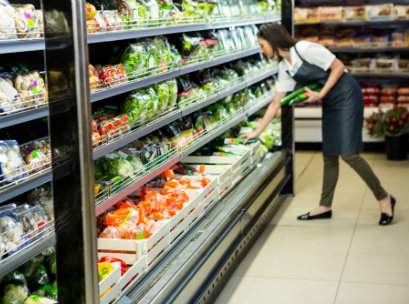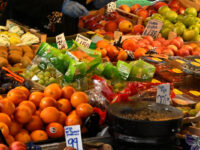 Food security is a big topic these days, and with good reason. By 2050 there will be 10 billion people on earth, and – based on current methods of production – not enough food to go around. When you add to this the fact that around 1.3 billion tonnes of food goes to waste across the world every year, worth USD $1 trillion, there’s certainly cause for concern among global food producers.
Food security is a big topic these days, and with good reason. By 2050 there will be 10 billion people on earth, and – based on current methods of production – not enough food to go around. When you add to this the fact that around 1.3 billion tonnes of food goes to waste across the world every year, worth USD $1 trillion, there’s certainly cause for concern among global food producers.
Around 80 per cent of food loss happens before produce ever reaches supermarket shelves. Take fruit, for example. Five years ago, the industry rejection rate for mangoes was as much as 30 per cent.
Every second the fruit is kept above its optimal temperature through the supply chain, ripening accelerates – not monitoring or optimising the management of this can lead to fruit that deteriorates before the optimal eating date. If supermarkets know this information, they can sell that tray or batch of fruit first, before less ripe fruit, and reduce the amount that needs to be thrown away. Up until now, there has been no way to trace this, but that’s where new technology and standards have a part to play.
Over the past decade, the global food situation has been bolstered by automated replenishment based on forecasting software, real-time inventory management systems, and dynamic pricing to improve stock management and margins. Now, retailers are adopting the new GS1 Databar, which carries the Global Trade Item Number (GTIN) as well as storing information such as serial numbers, lot numbers and expiry dates.
Tthe “GS1 Global Traceability Compliance Criteria for Food Application Standard” will apply to everyone in the industry. From farmers and growers, to container and packaging manufacturers, logistics providers, manufacturers and processors, importers and exporters to wholesalers and retailers; it has real meaning and value to consumers to help optimise the quality of the produce we consume. GS1 makes food more traceable.
Currently, a barcode on a mango can tell you which grower it came from, and from which block. But GS1 wants to take trace and trackability to another level. When you pick up your mango from the supermarket, growers want it to be identifiable as being from Tree No. 28 on the Jones Block in Katherine, harvested at 10.26am on 14 November. This creates the ability to dive into a whole other layer of information about the produce, such as how much irrigation was used on that block, and what chemicals were sprayed.
As another example, while we tend to take standards for granted in Australia, the recent needles-in-strawberries crisis has highlighted a critical need for better information throughout the supply chain. Customers want more trace and trackability on their fruit. When I’m buying strawberries, I now want to know that there’s a system in place that has made sure this fruit has been through a farm that has an X-Ray machine with a metal detector. GS1 can include this kind of data, enabling me to scan a QR code before purchase; giving me the assurance that what I’m buying is 100 per cent safe, or more to the point, that food safety standards have been imposed.
GS1 means that every item shipped gets a unique global trade item number, a production batch or lot code, a unique serial number for each pallet, and then a unique shipment identification number. Each item also has attribute fields, including quantity, a “sell-by” or “expiry date”. The supplier or recipient are tracked, as well as the despatch date and time. This applies to all fresh produce, whether fish, meat and poultry, wine or vegetables. Using the blockchain will then ensure that all data collected is authentic, tamperproof, recorded (and viewable) in real-time.
Tracking food along its journey is key to reducing the vast amount of loss between paddock and plate, and is important to giving customers more confidence in the food that they buy. The AgTech eco-system has an opportunity to create a world-class rollout for GS1 with Australian producers using blockchain and IoT devices, to improve food storage and transportation methods to become more efficient and less wasteful, and increase the overall quality (and taste!) of the food we eat.
Andrew Grant, co-founder of South Australian AgTech betaworks Availer.














